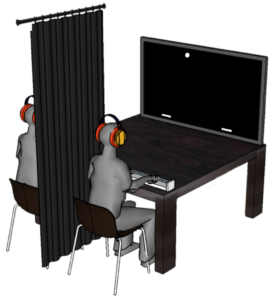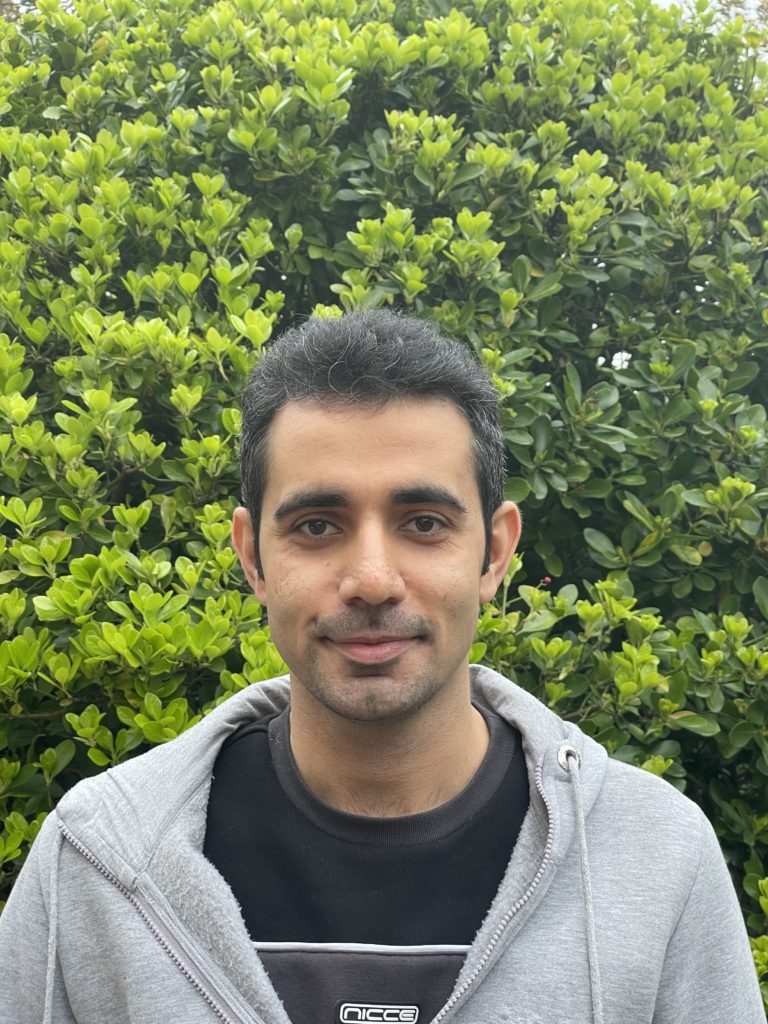ESR project 6
Towards a therapeutic interaction game: developing an adaptable artificial agent
Host Institution: Aix-Marseille University
Department that hosts the PhD: Institute for Movement Sciences
Supervisors involved: Prof. dr. Bootsma, Dr. Casanova, Dr. Zaal
Project description
The aim of this project is to develop an adaptable artificial agent, capable of taking on the role of one of the players in the doubles-pong task (see below), that can ultimately be used in therapy for persons with autistic spectrum disorder (ASD). For this purpose, in this project the manual interception behaviour of individuals with and without ASD will be studied and modelled at the level of the individual agent-environment system. Adapting the model-generated interception behaviour by variation of model parameters will be used to mimic the behavioural characteristics observed in standard and ASD populations, allowing evaluation of how human-like, and perhaps how ASD-like, the behaviour is being perceived. Because previous research suggested that the behaviour of the agent-agent-environment system emerges from the dynamics of the two coupled agent-environment systems, these aspects of the artificial agent might prove beneficial in developing the doubles-pong task into a therapeutic tool for ASD. Working towards a doubles-pong tool for therapeutic use, this project will focus on interception by a single participant, without but also with a partner present, the partner being diagnosed with ASD or not. Combined with a detailed model of the operative informational coupling, established in the partner (ESR 5) project, the agent-environment model of individual interception arrived at in this project will be used to build a full doubles-pong agent-agent-environment model, including an artificial agent.
Doubles pong (task employed in Projects 5,6, 7 and 8)

In the doubles-pong task, two individuals have to coordinate their actions in such a way that one of them intercepts an approaching virtual ball. Each player controls a separate paddle that moves along the bottom of a shared computer screen. The ball that falls under an angle from the top of the screen needs to be intercepted by one of the paddles, without the two paddles colliding. Previous research has suggested that the division of interception space by the two players emerges from their interactions rather than being fixed a priori. In the cases that a ball is directed in between the two individuals’ starting positions, both start moving and one player subsequently abandons this movement, presumably when (s)he sees that the other is on an interception course. ESRs 4-8 will use the doubles-pong task.

About ESR6-Danial Borooghani
I come from Khorasan, Iran. I studied my BSc in Mechanical Engineering at KNTU and then my MSc in Mechatronics Engineering at the University of Tehran. Right now, I an doing my PhD at Aix-Marseille University.
The goal of my project is to design an artificial agent to play the role of a participant in a double-pong task. This artificial agent would be finally used for the rehabilitation of ASD (Autistic Spectrum Disorder) participants.
If it is summer and the day is sunny, nothing is better for me than a peaceful swim in the sea. During the winter, I put some oil paint on the palette, take a brush and start to make the canvas dirty!